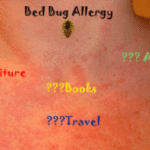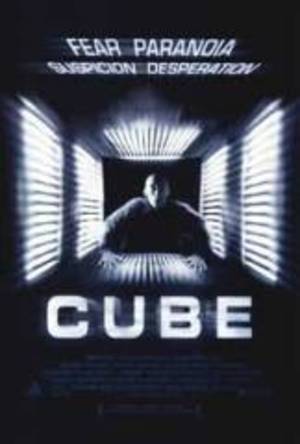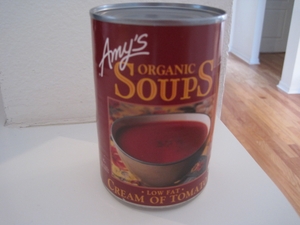After living in Boston and then three different apartments in Manhattan, I can tell you a thing or two about pest control. Mice, bugs and rats are all a part of living in a crowded urban area. Like me, if you are a resident of a big city, you may wake up one morning and realize that you’re living in a virtual zoo of unwanted creatures.
I don’t want to offend anyone with what I’m about to say–if you’re looking for kind, humane ways of persuading the mice from your house, that’s not my article.
Signs Your Home Has Mice
1. Mouse droppings
Mouse poop is shaped like a grain of rice, but may be one half to one third the size. It’s black, rough, and symmetrical, and you’ll find it on the floor of your closet, beneath your kitchen sink, under your radiator, or in any place that’s a logical point of entry for a mouse.
2. Noises in the Walls
This might sound like frantic scratching or nibbling. More often, you’ll hear them running from one end of the ceiling to the other, as they kick up the little pieces of rubble and grit. It’s usually surprisingly loud–instead of envisioning mice, you may find yourself wondering if there’s a cat stuck behind your walls.
3. Holes chewed in your bags of food
If they’ve found your food, you know you’ve got a problem. I’ve had mice in my apartment many times, but rarely did the situation escalate to the point that they were invading my cabinets and tearing up my things. Once the mice find what they’re looking for, they’re even harder to get rid of. Be sure to keep your food safely stored in Tupperware and you’ll save yourself a lot of trouble in the long run.
4. Visual
Obviously if you see a mouse in your living room, then you know mice are able to get into your home–but don’t panic unless you’re noticing all the other signs of rodents that I’ve mentioned above. Especially if you live in an apartment building, mice will travel from one home to the next in search of food and shelter. Just sighting a mouse doesn’t mean that you have mice living with you–yet. In my experience, hearing noises, finding mouse droppings, and noticing holes in your bags of food are all greater indications of a definite problem.
Get rid of Mice
1. Glue traps
After years of trial and error, this is my weapon of choice. I divide glue traps into two categories: big white ones and little black ones. The big white ones are nearly as flat as sheets of paper and cover a greater surface area than the little black ones. Most often big white ones are what pest control people use. I have had very poor luck with big white glue traps. They’re theoretically better (because they’re bigger and flatter than the black traps), but they don’t seem to be sticky enough to catch anything except spiders and roaches.
Little black glue traps may be purchased at grocery stores, drug stores, and hardware stores. (for those of you living in middle America, try Walmart or Target) They’re thick and bordered by little plastic lips that hold the glue in, so they each one is like a mini tub of glue. Their performance is fantastic. Here’s what you do:
a. Place the glue traps where ever you’ve seen mice and where ever you find their droppings. Other logical places to put glue traps are beneath the kitchen sink, anywhere in your home where a hole is cut into the wall (especially where pipes enter or exit the walls), behind doors, under tables, chairs, beds, stoves refrigerators and couches, near garbage cans, and anywhere that is dark, or where ever you keep food or stacks of papers. Basically, mice like to run under things and along walls, they like to hang out where they can find food and shelter, and their entry point into the home is usually through pipes and holes in the walls.
b. You can check the traps every once in a while, but if you catch a mouse on a trap, you’ll know pretty quickly. Likely, you’ll wake up in the night to hear it squeaking as it tries to free itself. After you’ve caught the mouse, you’ll have to decide how you’d like to dispose of it. You can try to release it back into the streets, but you’d have to find a way to get it off the trap. If you’re going to kill the mouse, the most humane way (that I can think of) is to drown it. Drop 3 or 4 paper towels on the mouse (to prevent it from biting you). Pick it up with the trap still attached to its body, and drop it in a bucket of water.
2. Snap traps
Bait them with a little bit of peanut butter (it works better than cheese) and leave them in the same locations where you would leave glue traps. When they work, they kill the mouse instantly. I stopped using these because they don’t always work–sometimes instead of snapping the mouse’s neck, they only clip a tail, or a leg. This leaves you stuck with a panic-stricken mouse careening up and down your hallway with a trap stuck to its body.
3. Poison
Poison is bad for a few reasons. First (and you’ve all heard the stories): the mice eat the poison, then die in your walls and you have to smell dead mice while the bodies decay. Second: anyone who has ever seen a mouse die from poison knows that the mouse really suffers. Third: if you have pets or kids…well, God forbid. I do not recommend poison.
Prevention
1. Stuff the holes in your walls with steel wool
Check all closets, under cabinets and radiators and behind your stove and your refrigerator. Anywhere that a pipe enters the wall will be a possible point of entry for a mouse, because the walls are usually not a snug enough fit around the pipe.
2. Keep all your food in Tupperware
I especially recommend this if you live in the country, or if you live in a big city, where mice are a normal occurrence.
3. Keep a clean house
Sweep your kitchen floors often, take out your garbage nightly, don’t leave dirty dishes in your sink, and don’t leave food on the counters.
Jane Lane, Associated Content






